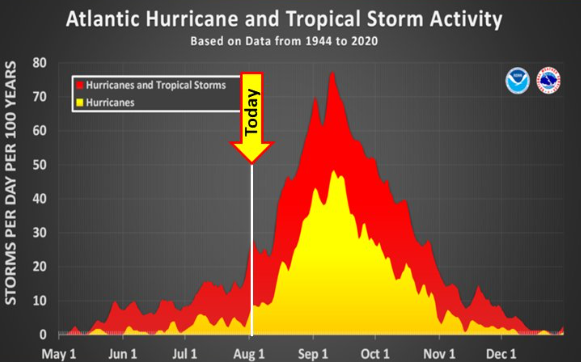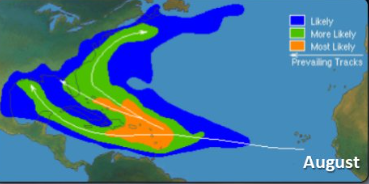Weather Permitting: Hurricane season has been quiet so far in 2022. Will it stay that way?

About a month ago, it seemed the 2022 Atlantic hurricane season was off and running.
From the Carolinas to Central America, tropical storms were slogging ashore, with a seemingly endless freight train of low-pressure systems chugging across the Atlantic.
Fast-forward to early August. No hurricanes, no storms. Not even a promising swirl for Hurricane Hunters to check out over the past month. It's like someone pulled the tropical plug. For only the fourth time in the past 30 years, the stretch from July 4 to Aug. 4 has passed without any named storm activity. The tropics, it seems, are drier than the Baptist state convention.
Were all the dire predictions of another hyperactive hurricane season just a lot of hot air? Or have weather enthusiasts just been spoiled by the nonstop tropical spin-ups we've seen over the past couple of years?
The answer is probably a little bit of both. This 2022 season is the first in the past five years that got to August without at least one hurricane forming. And in the last 30 years, only four seasons have been storm-free from July 4 through Aug. 4: 1993, 1999, 2000 and 2009.
Remember this week two years ago? The Cape Fear region was bracing for the arrival of Hurricane Isaias — the ninth named storm of the season. Another storm, Hanna, had already become the first hurricane of the season, and by the end of the year, the National Hurricane Center was deep into the Greek alphabet of storm names.
Last year saw another batch of storms — but oddly there was a four-week breather during July into August as well. That rest was rudely ended when a trio of named storms — Fred, Gracie and Henri — all dropped off the African coast within a few days of each other. The 2021 season went on to feature 21 named storms.
So we've been conditioned over the last couple of years to expect a parade of storms, especially with conditions that are conducive to development. A continuing La Nina, with above-average sea temperatures, would bode well for storm formation. And, as the hurricane season shifts from "homegrown" systems to the long-tracking Cape Verde storms, all eyes turn to the west coast of Africa.
What we've seen for the last couple of weeks has been surprising. An extreme layer of bone-dry, dusty Sahara Desert air has cloaked the eastern Atlantic, choking potential storms as they wade off the coast. This dust cloud is a common summer feature, but it has been particularly potent during July.
In addition, strong low-level winds have helped rip potential systems apart, and sinking air west of Africa prevents the towering storm clouds we associate with tropical systems. It doesn't matter how warm the water is if the storms can't use it. And right now, conditions in the central Atlantic are downright hostile.

What's next
Will things stay that way? Not likely. Already there are indications that the Sahara Dust Layer is beginning to ease. As sea temperatures continue to creep up, sinking air should become less of an issue. And the wave train off Africa shows no sign of stopping.
A few past "slow start" seasons may offer a hint for this year:
The 2019 season saw an equally quiet start, with the Atlantic producing only a "C" storm (Chantal) by mid-August. A week later, the gates opened, and 2019 ended up with 18 named storms.
In 2010, Tropical Storm Colin didn't arrive until the first week of August, another slow start to the season. However, by the end of the month, two Category 4 storms formed (Danielle and Earl) and the season ended up with 19 named systems.
Finally, the "slow start" season of 1999 made its mark on North Carolina. By early August, only one named storm had formed. By the end of the season, five Category 4 storms had formed, and two (Dennis and Floyd) teamed up that September to produce devastating floods in eastern North Carolina. And, for those keeping track, 1999 was another La Nina year.
So, while things may seem quiet in the Atlantic, we're actually not that far off the 30-year average for hurricanes. August is the traditional first month for hurricanes to form, with early September the peak of the season.
Keep an eye on conditions in the Central Atlantic starting in mid-August. I think we've got a long way to go.
Stay tuned!
Got a weather question? Chick Jacobs can be reached at ncweatherhound@gmail.com or NCWeatherhound on Twitter.
The Fayetteville Observer app is free to download
This article originally appeared on The Fayetteville Observer: Hurricane season is unusually quiet in 2022, here's what's next
